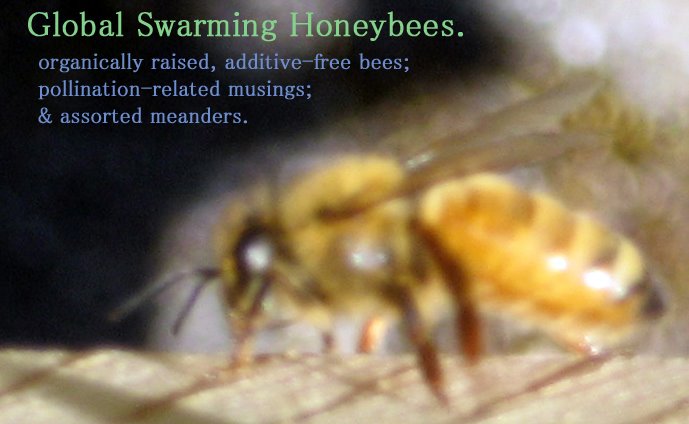The pinxter (an amazing native azalea) has been in glorious blossom all week, attracting dozens of bumblebees and Eastern Tiger Swallowtails. It's also attracted one of my favorite insects, the hummingbird moth, which mimics the green coloration of the ruby-throated hummingbird, hovers and maneuvers like a hummer, and even hums like a hummer with its rapidly beating wings. You can see why this moth is also known as the "Common Clearwing."

Check out that proboscis!
Here you get a sense of the moth's hummingbird-like stance and flight pattern.

Proboscis to the flower, the hummingbird moth sips the pinxter's nectar. The plant gives off a wonderful sweet-peppery scent. Doesn't seem to attract the honeybees, though. They're off working the remains of the horse chestnut blossoms, the many hawthorns in bloom, and the very first blackberry blossoms of the season. I've read that the azalea flower's shape does not facilitate easy nectar-gathering for honeybees, and based on the length of the hummingbird moth's proboscis compared to the honeybee's, that makes sense to me.
I've also read that if honeybees DO gather azalea nectar in large quantities, the resulting honey can be toxic to humans (though safe for bees). Honey produced from rhododendron, mountain laurel, and azalea forage is called Mad Honey and is both psychoactive and poisonous (so you hallucinate and then die? I dunno. I don't want to find out.).
While I am glad our honeybees aren't gathering from the pinxter, it occurs to me that herein might lie a viable pathway to a honeybee revolt against the array of human-sponsored abuses these amazing creatures are being forced to endure. The honeybees have a right to be mad; maybe it's time they went on strike and started producing Mad Honey for awhile, until we stop treating them like mechanical objects, and start showing a little respect.
6.04.2007
Hummingbird Moth (Mad Honey, Anyone?)
Subscribe to:
Post Comments (Atom)






1 comment:
Mad honey! What a phenomenally cool thing-I-never-knew-about-until-today! That just begs to be used in a story.
I wonder how it tastes. Any idea?
Post a Comment